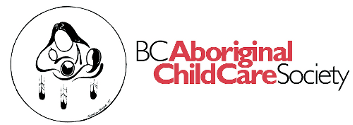Relevance of the Aboriginal Children’s Health and Well-being Measure beyond Wiikwemkoong (Record no. 1807)
[ view plain ]
| 000 -LEADER | |
|---|---|
| fixed length control field | 03943nab a22003017a 4500 |
| 003 - CONTROL NUMBER IDENTIFIER | |
| control field | BCACCS |
| 005 - DATE AND TIME OF LATEST TRANSACTION | |
| control field | 20170604105201.0 |
| 008 - FIXED-LENGTH DATA ELEMENTS--GENERAL INFORMATION | |
| fixed length control field | 140918s2017 o 000 0 eng d |
| 040 ## - CATALOGING SOURCE | |
| Original cataloging agency | BCACCS |
| 100 1# - MAIN ENTRY--PERSONAL NAME | |
| Personal name | Young, Nancy |
| 9 (RLIN) | 414 |
| 245 10 - TITLE STATEMENT | |
| Title | Relevance of the Aboriginal Children’s Health and Well-being Measure beyond Wiikwemkoong |
| Medium | [electronic resource] |
| 260 ## - PUBLICATION, DISTRIBUTION, ETC. (IMPRINT) | |
| Date of publication, distribution, etc. | 2017 |
| 300 ## - PHYSICAL DESCRIPTION | |
| Extent | 1 online resource |
| 520 3# - SUMMARY, ETC. | |
| Summary, etc. | Introduction: Aboriginal children in Canada experience significant disparities in health in comparison to their mainstream peers. As Aboriginal communities and agencies strive to improve health, it is important to measure the impact of new programs and services. Since many Aboriginal children live in rural and remote communities, it is important that communities have access to measurement tools that are relevant and feasible to implement in these contexts. The Aboriginal Children’s Health and Well-being Measure (ACHWM) was developed to meet the need for a culturally relevant measure of health and wellbeing for Aboriginal children (ages 8–18 years) in Canada. It was developed within one First Nation community: the Wiikwemkoong Unceded Territory. The intention from inception was to ensure the feasibility and relevance of the ACHWM to other Aboriginal communities. The purpose of this article is to describe the relevance of the ACHWM beyond Wiikwemkoong.<br/>Methods: This article presents the results of a community-based and collaborative research study that was jointly led by an academic researcher and a First Nations Health leader. The research began with the 58-question version of the ACHWM developed in Wiikwemkoong. The ACHWM was then submitted to a well-established process of community review in four new communities (in sequence): Weechi-it-te-win Family Services, M’Chigeeng First Nation, Whitefish River First Nation, and the Ottawa Inuit Children’s Centre (OICC). The review process included an initial review by local experts, followed by a detailed review with children and caregivers through a detailed cognitive debriefing process. Each community/agency identified changes necessary to ensure appropriate fit in their community. The results from all communities were then aggregated and analysed to determine the similarities and differences.<br/>Results: This research was conducted in 2014 and 2015 at four sites. Interviews with 23 children and 21 caregivers were completed. Key lessons were learned in all communities that enabled the team to improve the ACHWM in subtle but important ways. A total of 12 questions were revised, and four new questions were added during the process. This produced a 62-question version of the ACHWM, which was endorsed by all communities.<br/>Conclusions: The ACHWM has been improved through a detailed review process in four additional communities/agencies and resulted in a stable 62-question version of the survey. This process has demonstrated the relevance of the ACHWM to a variety of Aboriginal communities. This survey provides Aboriginal communities with a culturally appropriate tool to assess and track their children’s health outcomes, enabling them to gather new evidence of child health needs and the effectiveness of programs in the future.<br/>Key words: Aboriginal population, adolescent, Canada, child, culture, interview, surveys and questionnaires. |
| 650 #0 - SUBJECT ADDED ENTRY--TOPICAL TERM | |
| Topical term or geographic name as entry element | Well-being |
| 9 (RLIN) | 134 |
| 650 #0 - SUBJECT ADDED ENTRY--TOPICAL TERM | |
| 9 (RLIN) | 286 |
| Topical term or geographic name as entry element | Children |
| General subdivision | Health aspects |
| 650 #7 - SUBJECT ADDED ENTRY--TOPICAL TERM | |
| 9 (RLIN) | 3138 |
| Topical term or geographic name as entry element | Screening and assessment |
| Source of heading or term | BCACCS |
| 700 1# - ADDED ENTRY--PERSONAL NAME | |
| Personal name | Wabano, Mary Jo |
| 9 (RLIN) | 415 |
| 700 1# - ADDED ENTRY--PERSONAL NAME | |
| Personal name | Burke, Trisha A. |
| 9 (RLIN) | 416 |
| 700 1# - ADDED ENTRY--PERSONAL NAME | |
| Personal name | Blight, Shannon |
| 9 (RLIN) | 3775 |
| 700 1# - ADDED ENTRY--PERSONAL NAME | |
| Personal name | Baker-Anderson, Karen |
| 9 (RLIN) | 3776 |
| 700 1# - ADDED ENTRY--PERSONAL NAME | |
| Personal name | Beaudin, Roger |
| 9 (RLIN) | 3777 |
| 700 1# - ADDED ENTRY--PERSONAL NAME | |
| Personal name | McGregor, Leslie |
| 9 (RLIN) | 3778 |
| 700 1# - ADDED ENTRY--PERSONAL NAME | |
| Personal name | McGregor, Lorrilee |
| 9 (RLIN) | 3779 |
| 773 0# - HOST ITEM ENTRY | |
| Title | Rural and Remote Health |
| Related parts | Vol. 17 (2017), Article 3941 |
| 856 41 - ELECTRONIC LOCATION AND ACCESS | |
| Uniform Resource Identifier | http://www.rrh.org.au/articles/subviewnew.asp?ArticleID=3941 |
| Public note | Full text |
| 942 ## - ADDED ENTRY ELEMENTS (KOHA) | |
| Source of classification or shelving scheme | |
| ARTICLE | Journal Article |
No items available.
